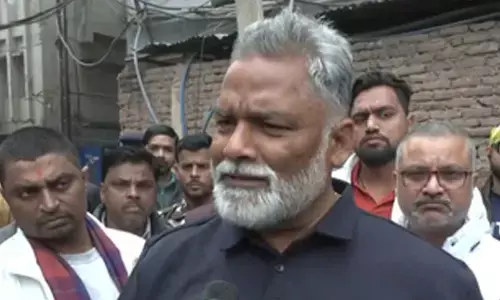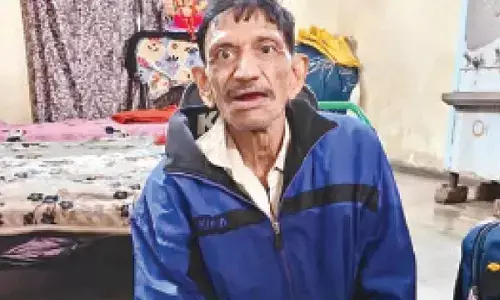Panchayati Raj institutions

Panchayati Raj is the basic unit of administration in a system of governance. The Constitutional (73rd Amendment) Act 1992 came into force in India on 24 April 1993 to provide constitutional status to the Panchayati Raj institutions. This act was extended to the Panchayats in the tribal areas of eight states, namely Andhra Pradesh, Gujarat, Himachal Pradesh, Maharashtra, Madhya Pradesh, Odisha and Rajasthan from 24 December 1996.
Panchayati Raj is the basic unit of administration in a system of governance. The Constitutional (73rd Amendment) Act 1992 came into force in India on 24 April 1993 to provide constitutional status to the Panchayati Raj institutions. This act was extended to the Panchayats in the tribal areas of eight states, namely Andhra Pradesh, Gujarat, Himachal Pradesh, Maharashtra, Madhya Pradesh, Odisha and Rajasthan from 24 December 1996. Currently, the Panchayati Raj system exists in all the states of India except Nagaland, Meghalaya, Mizoram and in all Union Territories except Delhi
It has three levels: Gram Panchayat (village level), Mandal Parishad or the Block Samiti or Panchayat Samiti (block level) and Zilla Parishad (district level). The term "Panchayati Raj" is an ancient concept adopted by the people of India for the local administration of a village. Raj means "rule". Mahatma Gandhi advocated the Panchayati Raj, a decentralised form of the Government where each village is responsible for its own affairs. The term for such a vision was Gram Swaraj. The leader of the Panchayat was generally called the Mukhiya or Sarpanch, and occupies an elected position.
Recommendations of Balwant Rai Mehta Committee
The Balwant Rai Mehta Committee, headed by MP Balwant Rai Mehta, was a committee appointed by the Government of India in January 1957 to examine the working of the Community Development Programme (1952) and the National Extension Service (1953) and to suggest measures for their better working.
The recommendations of the committee were approved by NDC in January 1958 and this set the stage for the launch of Panchayati Raj Institutions throughout the country. The committee recommended the establishment of the scheme of ‘democratic decentralisation’, which finally came to be known as Panchayati Raj.
Establishment of a 3-tier Panchayati Raj system
The Panchayati Raj system was first adopted by the state of Rajasthan in the Nagor district on October 2, 1959. The second state was Andhra Pradesh, while Maharashtra was the ninth state. This system was adopted by the state governments during the 1950s and 60s, as laws were passed to establish Panchayats in various states. It also found its backing in the Indian Constitution, with the 73rd Amendment in 1992 to accommodate the idea.
The Amendment Act of 1992 contains provisions for the devolution of powers and responsibilities to the Panchayats, both for the preparation of economic development plans, social justice and for implementation in relation to 29 subjects listed in the eleventh schedule of the constitution.
The Panchayats receive funds from three sources:
- local body grants, as recommended by the Central Finance Commission
- funds for implementation of centrally sponsored scheme
- funds released by the state governments on the recommendations of the State Finance Commissions
The Balwant Rai Mehta Committee was a committee appointed by the Government of India in January 1957 to examine the working of the Community Development Programme (1952). The Act aims to provide a 3-tier system of Panchayati Raj for all states having a population of over two million, to hold Panchayat elections regularly every five years, to provide seats reservations for scheduled castes, scheduled tribes and women; to appoint a State Finance Commission to make recommendations regarding the financial powers of the Panchayats and to constitute a District Planning Committee to prepare a development plan draft for the district. The 3-tier system of Panchayati Raj consists of:
- Village-level Panchayats
- Block-level Panchayats
- District-level Panchayats
Powers and responsibilities are delegated to Panchayats at the appropriate level:
- Preparation of the economic development plan and social justice plan.
- Implementation of schemes for economic development and social justice in relation to 29 subjects given in the Eleventh Schedule of the Constitution.
- To levy and collect appropriate taxes, duties, tolls and fees.
The Block Panchayat
A block Panchayat (Panchayatsamiti) is a local government body at the tehsil or taluka level in India. This body works for the villages of the tehsil or taluka that together are called a Development Block. The Panchayat Samiti is the link between the gram Panchayat and the district administration. There are a number of variations of this institution in different states.
It is known as Mandal Praja Parishad in Andhra Pradesh, Taluka Panchayat in Gujarat, Mandal Panchayat in Karnataka, Panchayat Samiti in Maharashtra etc. In general, the block Panchayat is a form of the Panchayati Raj but at a higher level. The constituency is composed of ex-official members (all sarpanchas of the Panchayat Samiti area, the MPs and MLAs of the area and the SDO of the subdivision), co-opt members (representatives of SC/ST and women), associate members (a farmer of the area, a representative of the cooperative societies and one of the marketing services), and some elected members. The Samiti is elected for five years and is headed by the Chairman and the Deputy Chairman.
Departments
The common departments in the Samiti are as follows:
- General administration
- Finance
- Public work
- Agriculture
- Health
- Education
- Social welfare
- Information technology,
- Water Supply Dept
- Animal Husbandry and others
There is an officer for every department. A government appointed Block Development Officer (BDO) is the executive officer to the Samiti and the chief of its administration. BDO is responsible for his work to the CEO of ZP.
Functions
- Implementation schemes for the development of agriculture
- Establishment of primary health centres and primary schools
- Supply of drinking water, drainage and construction/repair of roads
- Development of cottage and small-scale industries, and the opening of cooperative societies
- Establishment of youth organisations.
















